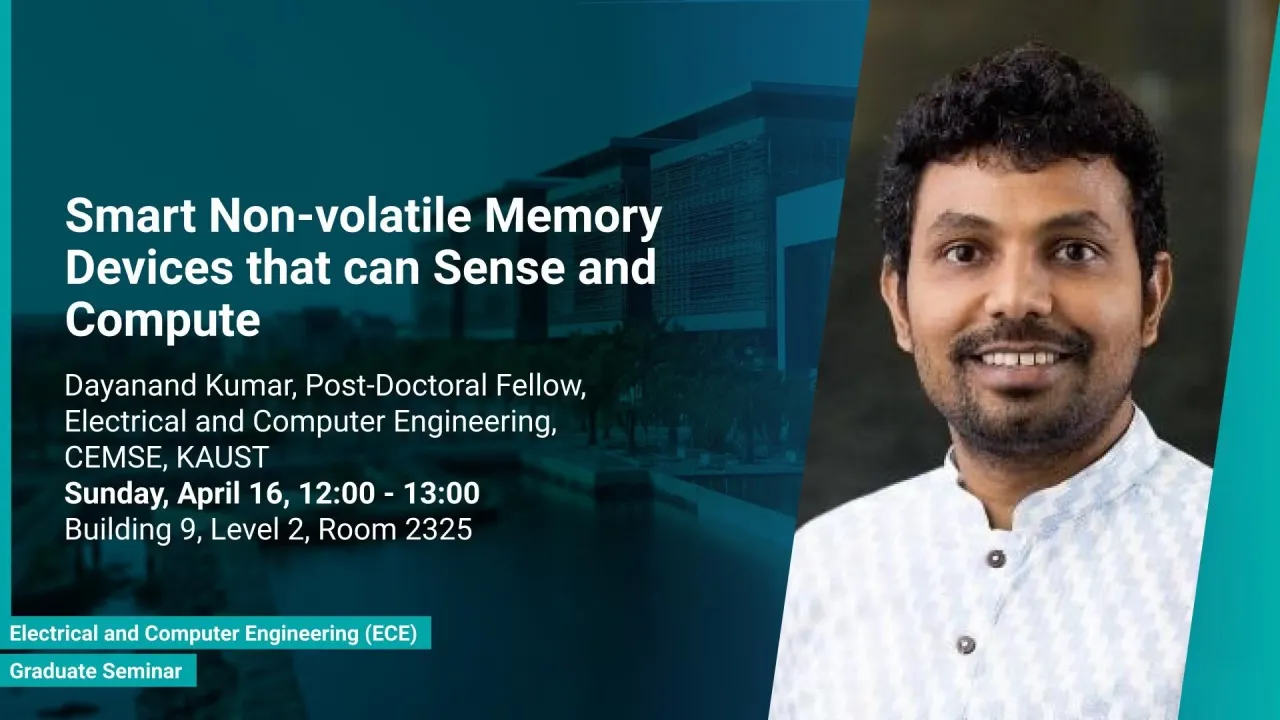
Smart Non-volatile Memory Devices that can Sense and Compute
Being renowned for operating with visible light pulses and electrical signals, optoelectronic smart non-volatile memory devices have excellent potential for neuromorphic computing systems and artificial visual information processing.
Overview
Abstract
Being renowned for operating with visible light pulses and electrical signals, optoelectronic smart non-volatile memory devices have excellent potential for neuromorphic computing systems and artificial visual information processing. In today’s talk I am going to cover our two different works based on optoelectronic smart non-volatile memory devices that can sense and compute. Here, with our first approach, we present a flexible back-end-of-line compatible optoelectronic memristor based on solution-processable black phosphorus/HfOx bilayer with excellent synaptic features, towards biomimetic retinas. The device shows highly stable synaptic features such as long-term potentiation (LTP) and long-term depression (LTD) for repetitive 1000 epochs, having 400 conductance pulses, each. The device presents advanced synaptic features in terms of long-term memory (LTM)/short term memory (STM), as well as learning-forgetting-relearning when visible light was induced on it. These advanced synaptic features can improve the information processing abilities for neuromorphic applications. Using the light induced characteristics of the device, a 6×6 synaptic array was developed to exhibit possible use in artificial visual perception. With our second approach, we developed a single sensing-storage-processing node based on a two-terminal solution-processable MoS2 metal–oxide–semiconductor (MOS) charge-trapping memory structure – the basic structure for charge-coupled devices (CCD) – and showing its suitability for in-memory light sensing and artificial visual perception. The array simulation received optical images transmitted using a blue light wavelength and performed inference computation to process and recognize the images with 91% accuracy. This study is a significant step towards the development of optoelectronic MOS memory devices for neuromorphic visual perception, adaptive parallel processing networks for in-memory light sensing, and smart CCD cameras with artificial visual perception capabilities. These multifunctional features in smart non-volatile memories make these devices highly suitable for optoelectronic memory storage, neuromorphic computing, and artificial visual perception applications.
Brief Biography
Dr. Dayanand Kumar is currently working as a postdoctoral fellow at SAMA lab, Electrical Department KAUST. He received his Ph.D. from National Chiao Tung University (NCTU), Taiwan, in 2018. He was awarded by the President of Taiwan for outstanding academic research performance. After his Ph.D., he worked as a Principal Integration Engineer (PIE) in Micron Technology, Taiwan. Then he moved to Nanyang Technological University (NTU), Singapore, as a postdoctoral research fellow. Dr. Kumar worked as a visiting assistant professor at National Cheng Kung University (NCKU), Taiwan before joining to KAUST. His current research interests include optoelectronic memristors for brain inspired computing, wide-bandgap oxide-based image/photo sensor, emerging memory devices for in-memory computing and in-memory sensing.
